Back with another less familiar sharks for Animal Toy Blog Shark Week 2022! Well, a few days ago I introduced an odd little figure that went to the dog(shark)s so today lets balance it it out with a cat(shark). This one is a less familiar figure from a less familiar Japanese company…of a less familiar shark! But at least I can tell the exact species, the cloudy catshark, Scyliorhinus torazame.

The cloudy catshark is one of many species in the family Scyliorhinidae, informally known as catsharks (although some are also called dogfish or nursehounds). This is a fairly large family, with anywhere from 50 to over 150 species, and 7 to 15 genera (it depends on whether you get your information from Fishbase (51 species, 7 genera) or Wikipedia (150 species, 15 genera) although the latter quotes Fishbase but doesn’t agree. So let’s say 51 species, 7 genera–most likely there was some taxonomic dividing. Anyway, relevant to our figure here, scyliorhinids are one of 8-10 (same issue) families in the order Carchariniformes, which include a wide variety of sharks of well-known and obscure sharks (including hammerheads, requiem sharks, houndsharks, and the infamous tiger shark). Catsharks as a group tend to be demersal feeders, and are generally smaller, with the largest species reaching 162cm. The cloudy catshark is at the smaller end, around 50cm.
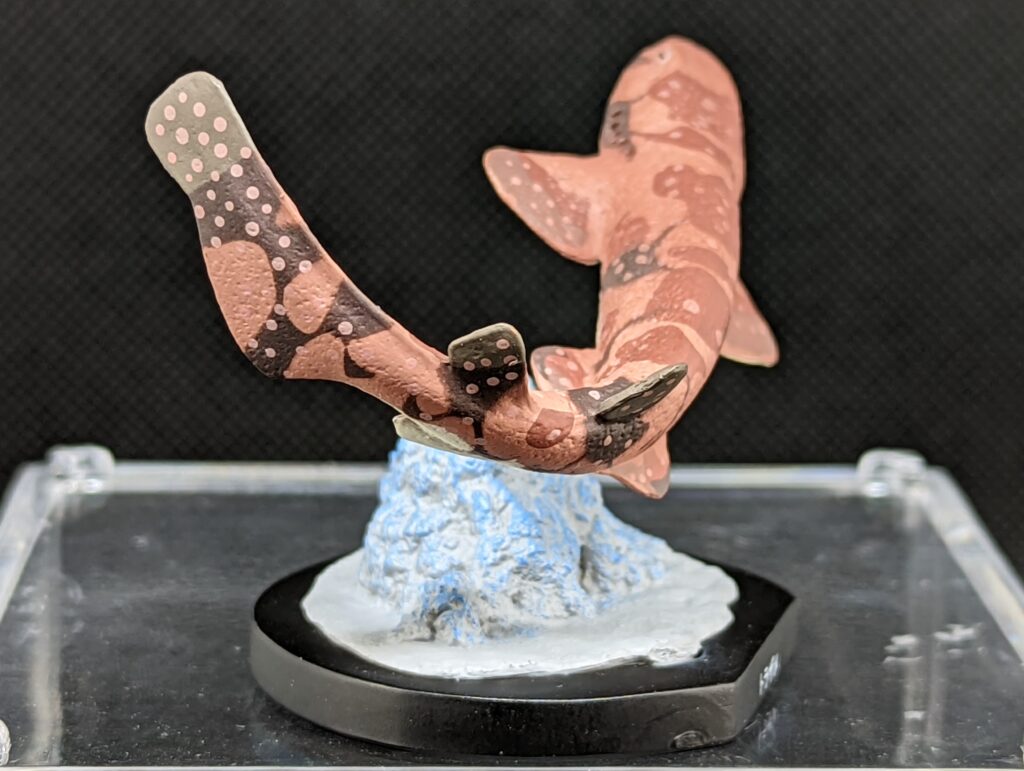
The cloudy catshark is fairly typical for castsharks overall in many respects. It has the long, somewhat dorsally flattened body with a more squared off snout. They have distinctive eyes, fairly elongate and cat-like, which gives them their names. The dorsal fins are roughly equal in size, placed well back on the body almost posterior to the pelvic fins, without anterior spines. The paired fins are small and rounded, and the anal fin is long, while the tail is low and strongly heterocercal with a very small lower lobe. Together, these indicate species that are not necessarily the best swimmers, instead preferring to swim on or near the bottom of the reefs in search of prey. Most of their activity is nocturnal, so they squeeze themselves into small spaces during the day. Apparently, some species may actually hide together during the day, and hunt together at night.
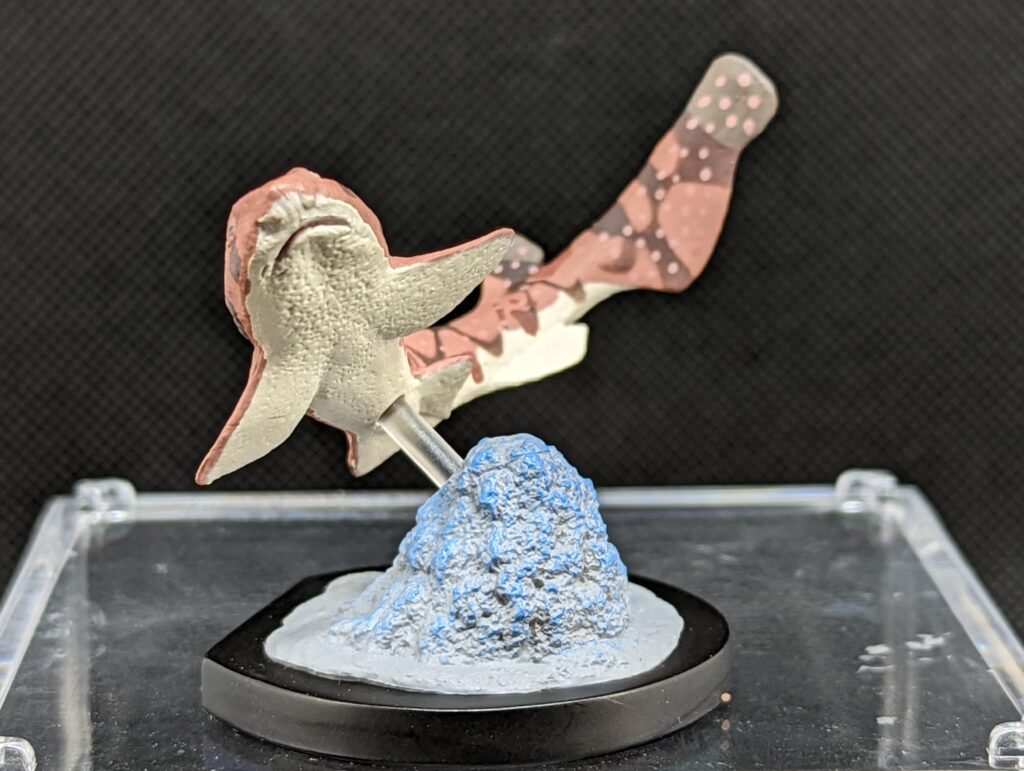
Cloudy catsharks are found in the northwest Pacific, off the coasts of Japan, China and the Korean peninsula; they may also be found in the Philippines. They are listed as least concern, which is good (but let’s not get complacent…) As with most catsharks, cloudy catsharks are demersal swimmers. Their preferred habitat is rocky reefs at depths from shore level to about 320 metres on continental shelves and continental slopes. Some catsharks undergo limited migrations, but cloudy catsharks do not appear to do so. Typical of the family, cloudy catsharks are predators that feed on invertebrates and fish. Given the small size, they are in turn predated upon by other animals, including the related blotchy swell shark that feeds on both the shark and its egg cases (the species is oviparous, as with many but not all catsharks). Apparently, because of their small size, these sharks are starting to see some attention as pets in aquaria, and definitely show up in public aquaria (for example, Ibaraki Prefectural Oarai Aquarium in Japan…)
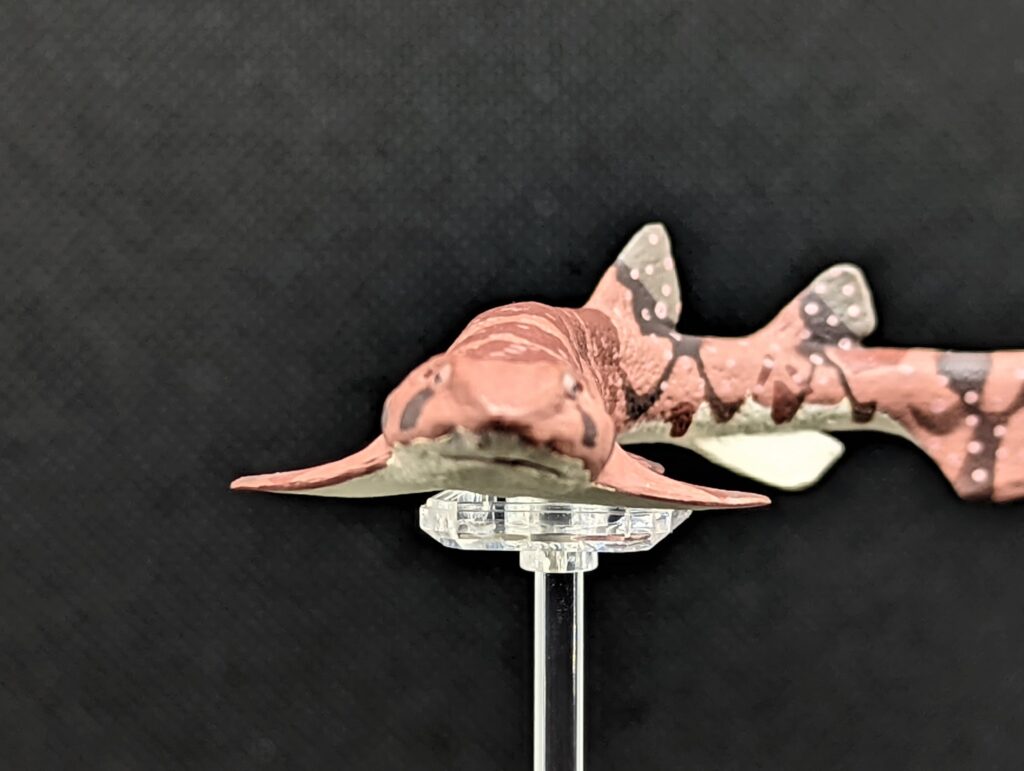
In appearance the colouring of cloudy catsharks is a base of light brown, with brown bands or blotches in other shades of darker browns. The underside is and ivory or cream colour. The striping of the species led to the specific name for this species–torazame is Japanese for ‘tiger shark’ but in English we already have one of those! So…cloudy? Because of cloudy blotches? Who knows. One notable thing, small whitish or lighter coloured dots are also scattered across the body in adults–which would indicate that this figure represents an adult! And there’s an awkward segue into the figure itself!
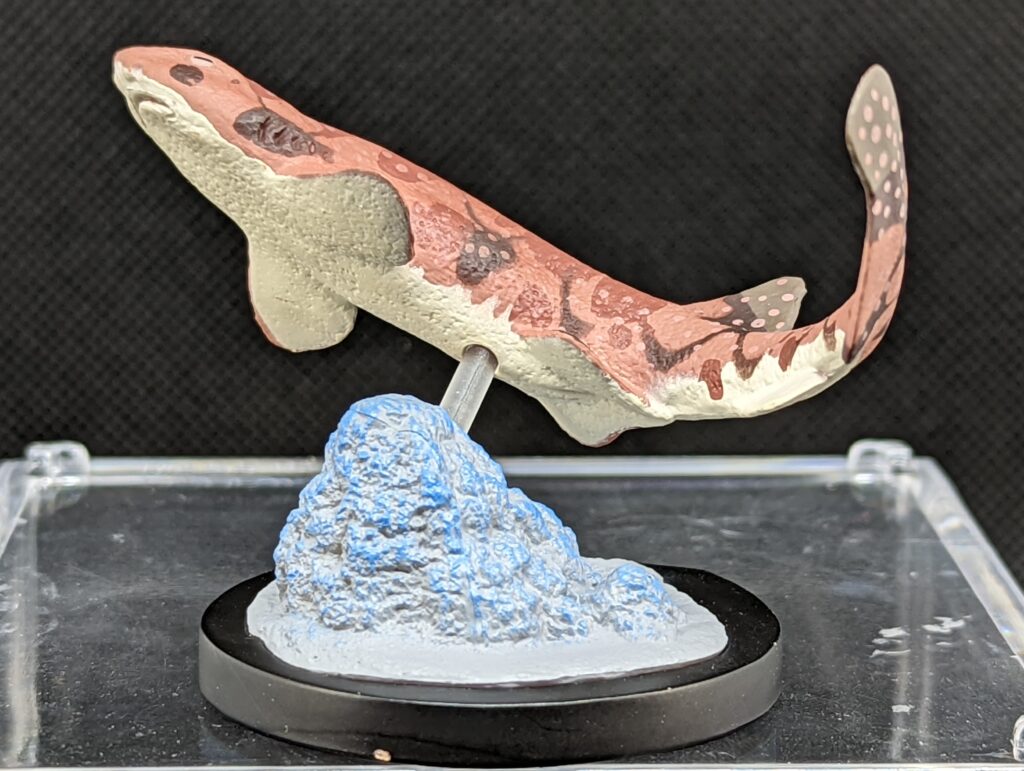
All in all, this figure does a great job of representing a cloudy catshark. The overall morphology is pretty much spot on–the flat body, long and sinuous form with the low, extended tail, and the far set dorsal fins. The pelvic fins do not appear to have claspers, indicating a female is represented. Around the head, the the small details are very well marked–the odd, oval eyes with the horizontal pupil are painted well, and the hint of the spiracles are present but correctly minimal. The gill slits are also correct, very small and decreasing in size, with the fourth and fifth very small and over the pectoral fins. The nostrils are marked and sculpted as well, with no channels to the mouth (which is correct). The subterminal mouth is sculpted as slightly open and properly large.

The body is sculpted as fairly rough and bumpy, which is apt as the skin of these sharks is generally rough due to quite prominent dermal denticles. Of course, this isn’t something that can be sculpted at this scale, but at least the sculpt is not smooth or silky, which would be the easy way to go with small figures like this. In terms of colouring, the design is very natural and realistic. The majority colour is an almost pinkish brown, with bands of chocolate brown across the dorsum and over the pectorals. Across the sides of the body are more patches (clouds?) of the chocolate brown as well as patches and squiggles of an even darker brown. The tail and dorsal fins are tipped on the distal edges with a gray band. And across all of this are light, roughly equal spots, again, indicating that the figure indicates an adult specimen. The belly is a uniform cream colour.

The figure is posed in a curved manner, indicating a swimming animal. The curve is fairly deep, curving heavily to the left post-pelvic fins. The model is mounted to a rocky base at an oblique angle, giving the shark an appearance of ‘banking’ to the right as it swims past the rock. In actuality, a more appropriate design might have shown the figure in more of a sinuous or crawling action through or between rocks and reefs, but the choice certainly makes the details of this beautiful figure clear. The figure is roughly 10 centimetres long along this curve, giving an approximate scale of 1:8 or 1:9, relatively large for many more common marine animal models. The rock base is attached to a black plinth with a single Japanese phrase on there–translation of this says ‘cloudy catshark’ so that’s good! Importantly for some collectors (and indicated in some photos) the figure is a separate piece from the acrylic rod and the base, so the figure can be displayed alone or placed into a different scene or display.

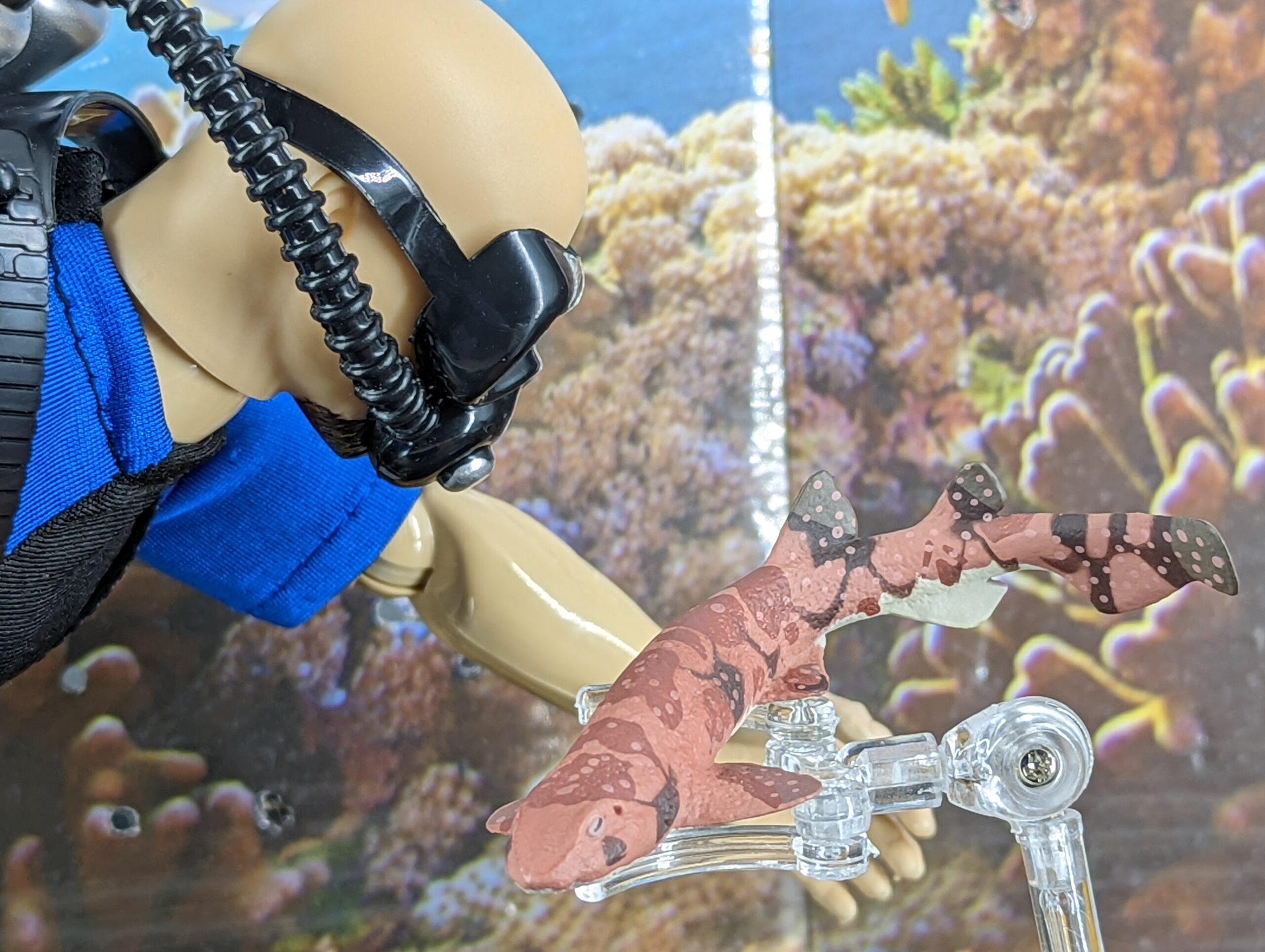
Altogether, the presentation is a very upscale and impressive model, especially as ForCorp is a bit of an odd creator, with a range of aquarium models that can best be described as ‘diverse’ in style. But the high end design of this model is fitting. This is one of five shark models released by ForCorp in their AquaWorld Sharks 1 series. This set, in turn was only available from the Ibraki Prefectural Oarai Aquarium in Japan. And from experience, the overall availability of the series outside Japan was fairly limited, with few even showing up on secondary sites (possibly due to being released in only one place…). This is a shame, as this figure can be best described as Kaiyodo models at a higher level, both because it is larger than those capsule or bottlecap figures, but also because the minute attention to detail makes these a worthy competitor to those famous models. The catshark is the only one I was able to get, and it was quite a challenge, but I highly recommend it–more of the ‘groundsharks’ or less common sharks should be given time as figures–they make up a large proportion of living sharks, and need more attention!
Disclaimer: links to Ebay and Amazon on the AnimalToyBlog are affiliate links, so we make a small commission if you use them. Thanks for supporting us!




I wanted this figure but it’s hard to find!!!!